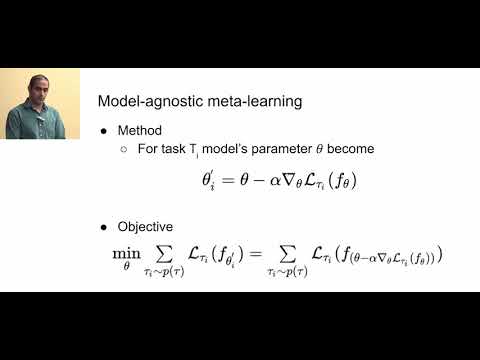Description:
Explore unsupervised meta-learning techniques for few-shot image classification in this 26-minute conference talk from NeurIPS 2019. Delve into the problem definition, task construction, and model-agnostic meta-learning approaches presented by researchers from the University of Central Florida. Learn about the UMTRA method, which utilizes random sampling and augmentation for task creation. Examine various augmentation techniques for datasets like Omniglot, ImageNet, and CelebA. Analyze ablation studies on Omniglot and Mini-ImageNet, and discover how video augmentation can be applied for self-supervision. Gain insights into feature visualization using t-SNE, particularly focusing on the last hidden layer. This presentation offers a comprehensive overview of cutting-edge approaches in unsupervised meta-learning for few-shot image classification tasks.

Unsupervised Meta-Learning for Few-Shot Image Classification
Add to list
#Computer Science
#Machine Learning
#Few-shot Learning
#Artificial Intelligence
#Computer Vision
#Unsupervised Learning
#Neural Networks
#Image Classification
#Transfer Learning
#Data Augmentation
#Meta-Learning